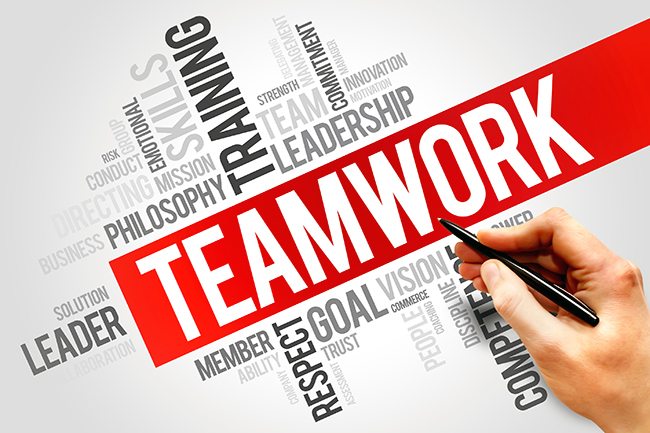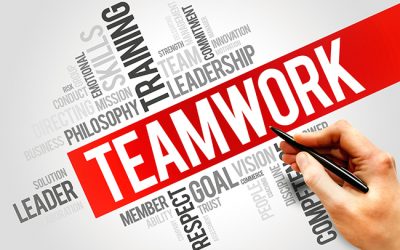We’ve all heard the phrase, “it’s not what you know, it’s who you know.” Now, aside from the fact that what you know is definitely important, there is some truth to the idea that relationships influence your options, in business and in life.
Healthy relationships increase our options, our leadership lid and our capacity for success. Unhealthy relationships are a cage, limiting our ability to grow, to inspire and to live in our own gifts and vision for life.
How we relate in interpersonal situations, both in groups and one-on-one, is a strong indicator of our relational leadership capacity. So, what’s a good way for us to rate ourselves and see where we may have some room for improvement? The process of answering these five questions will help accurately ascertain and improve our relational leadership.
1 – How do I operate inside someone else’s vision?
How we view ourselves when we’re working inside someone else’s system will play a big role in how we communicate and operate within it. Do we feel free or stuck? Valued or used? Do we fully understand the vision and our role in it? Is that role vital and life-giving or do we struggle to find our motivation each day? Perhaps most importantly, are these impressions being created by the situation, or are we bringing them into the situation because of our expectations?
2 – Where do I fit when the leader has a lower leadership lid?
What do we do and how do we think as a member of a team in which the leader does not possess the leadership capacity and ability we do? This is frustrating, and if we’re not intentional in our thoughts and our actions, it creates problems for the whole team … problems the leader may not be sufficiently able to address.
3 – Who am I when I meet someone for the first time?
First impressions matter, so the temptation to be inauthentic is very real. However, healthy relationships require authenticity, and there’s no better place to begin than at the very start. While putting our best foot forward is expected, we must be careful to do this with authenticity. Sacrificing realness for short-term acceptance often creates relational stress down the road.
4 – Who am I in an unfamiliar place or position?
“New” often feels uncomfortable, and that often tempts us to put up a guard or façade. However, we may still be an authentic, open version of ourselves in an unfamiliar situation. Fear or apprehension may still be there, yet when our confidence and enthusiasm comes from within, it’s not easily influenced by circumstances. This is the sort of magnetic leadership that draws people to us and makes them more confident and enthusiastic because of our example.
5 – Who am I when I don’t connect?
Whether the challenge is understanding a situation, a task or what a person is trying to communicate, sometimes we just don’t get it. What then? Do we lean in and seek understanding, or do we dismiss that person or situation as “too hard” or “just not my thing”? While we may not be responsible for the disconnect in understanding, we may still be the one to choose to create a way to bridge that gap. That kind of leadership is valuable no matter who you are or where you are in an organization. Bridge builders, translators and enthusiastic “let’s-do-it” people are vital to the success of every team
So, how did you do? Did you discover some areas of your relational leadership that would benefit from more focus and development? We’re going to unpack these ideas in future blogs. In the meantime, share your story in the comments below or contact me here to talk about it.

A customer service miscue leaves a lasting impression
In our last blog, we talked about the importance of investing in our team members personally, as well as professionally, and what that means for our organization. In this blog, I want to share a story about what can happen when leadership focuses on skills...

What Christmas means to me
This year, at Christmas, there are so many things tugging on our hearts. My husband, Bob’s, dad passed away earlier this year, and his mom was diagnosed with lung cancer. She will miss celebrating with us this year, because she’s having radiation...

Developing your team within an Employee Business Model
This is Part 3 in our series on building an Employee Business Model for your team. Previously, we talked about what an Employee Business Model is, what it will mean for your business, and how the hiring process is influenced by this approach to leadership....

How an Employee Business Model Builds a Better Team
In our last blog, we introduced the idea of the Employee Business Model, a daily plan to encourage and facilitate the personal and professional growth of our team members. When building and developing that plan, a leader considers every aspect of their...

What is your employee business model?
Building a successful business doesn’t work unless we build a solid, well-developed business model. Even then, there is risk. The right business plan accounts for the risks and works to mitigate the risk and maximize the potential. We do that through...

How Value Based Leadership Builds Long Term Success
Hey manager, quick question for you: When you think about how to get the most out of your team, what do you mean by “most”? How we answer that question reveals a lot about the way we think about our employees, and our approach tends to create a lot of the...

Building a Pro-Growth Environment
Once we have the best people in the right places on our team, how do we create the best atmosphere for growth…
Developing your team within an Employee Business Model
This is Part 3 in our series on building an Employee Business Model for your team. Previously, we talked about what an Employee Business Model is, what it will mean for your business, and how the hiring process is influenced by this approach to leadership....
How an Employee Business Model Builds a Better Team
In our last blog, we introduced the idea of the Employee Business Model, a daily plan to encourage and facilitate the personal and professional growth of our team members. When building and developing that plan, a leader considers every aspect of their...
What is your employee business model?
Building a successful business doesn’t work unless we build a solid, well-developed business model. Even then, there is risk. The right business plan accounts for the risks and works to mitigate the risk and maximize the potential. We do that through...
How Value Based Leadership Builds Long Term Success
Hey manager, quick question for you: When you think about how to get the most out of your team, what do you mean by “most”? How we answer that question reveals a lot about the way we think about our employees, and our approach tends to create a lot of the...
Building a Pro-Growth Environment
Once we have the best people in the right places on our team, how do we create the best atmosphere for growth…
Onboarding: Questions to help you Build the Best Team Possible
Most people accept that it’s more expensive to continue to hire and train new people than to find the best people in the first place, and then coach them up. However, it is extremely expensive – for your bottom line and your team’s emotional health – to keep the wrong people in key positions on your team…








0 Comments